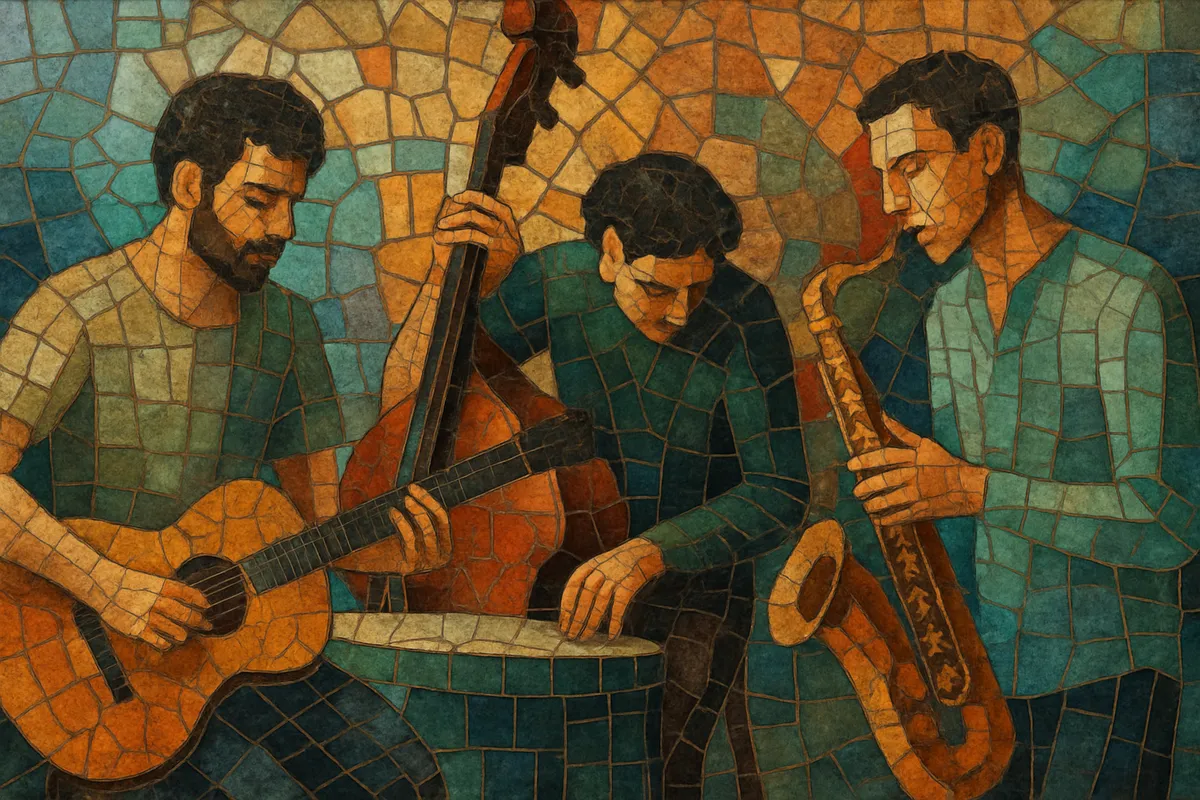
Indie jazz is a contemporary fusion that blends jazz harmony and improvisation with the DIY ethos, song-first sensibility, and textural minimalism of indie scenes. It favors concise forms, memorable motifs, and groove-forward arrangements while retaining the color and spontaneity of jazz.
Sonically, the style often features polyrhythmic, hip hop–schooled drumming; ostinato piano or bass figures; atmospheric synth pads; clean, roomy production; and sax or keyboard-led melodies. Rather than standards, bands typically craft original pieces with clear hooks, subtle dynamic arcs, and a modern, cinematic feel. The scene grew around small labels, collectivist bands, and digital platforms, making it equally at home in clubs, galleries, and curated playlists.
Indie jazz took shape in the 2010s, crystallizing around London’s DIY venues, campus scenes, and independent labels, while drawing on earlier crossovers between jazz, post-rock, and electronica. Musicians borrowed jazz harmony and improvisation, but framed them with indie production aesthetics, concise song structures, and groove-oriented writing.
The groundwork was laid in the 2000s by nu jazz and post-rock outfits that paired live instruments with electronics, cinematic writing, and minimalism. Touring networks, small festivals, and online communities (especially Bandcamp and YouTube) created a path for jazz-adjacent groups outside the traditional jazz circuit.
By the mid-to-late 2010s, a wave of UK-based artists—often young, collaborative, and cross-genre—defined the sound: hypnotic piano ostinatos, hip hop–inflected drums, sax/synth leads, and carefully sculpted dynamics. The approach resonated with audiences beyond jazz, landing on indie and electronic playlists and stages.
Streaming amplified the style’s visibility, rewarding succinct tracks and distinctive timbres. Scenes in Canada, Scandinavia, continental Europe, and Japan contributed their own flavors, with producers integrating sidechain compression, tape-style saturation, and delicate ambience while maintaining live interplay.
Indie jazz now denotes a flexible, song-centric, and collaborative approach to modern jazz. It sits comfortably next to indie electronic, neo-soul, and beat culture, shaping a generation of jazz-adjacent creators who value atmosphere, hook, and groove as much as harmonic depth.
Write with a song-first mindset: prioritize a compelling motif, a clear groove, and a coherent arc over extended solos. Keep arrangements spacious, allowing each texture to breathe.
Use extended chords (maj7(9/11), m9, add9), quartal voicings, and modal interchange. Favor modal or vamp-based harmony for hypnotic repetition, and craft singable, sax/keys-led melodies with subtle development rather than bebop lines.
Lean into hip hop– and broken-beat–inspired drumming with crisp ghost notes and syncopation. Explore steady ostinatos and polymetric layers (e.g., 3 over 4), and occasional odd meters (5/4, 7/8). Typical tempos range from 80–130 BPM.
Common setups include piano/keys, electric bass or synth bass, drum kit, and saxophone/woodwinds, with selective use of guitars and analog or software synths. Employ warm, clean tones, light saturation, roomy reverbs, and subtle tape wow/flutter for character.
Record live cores, then enhance with minimal editing, sidechain compression for pulse, and careful EQ to preserve transients. Arrange in sections (A–B–A–Coda) with dynamic swells, textural breakdowns, and short, purposeful solos.
Emphasize ensemble communication and micro-dynamics. Keep solos concise, referencing the main motif. Use electronics to extend timbre (pads, granular tails) without obscuring the live feel.

